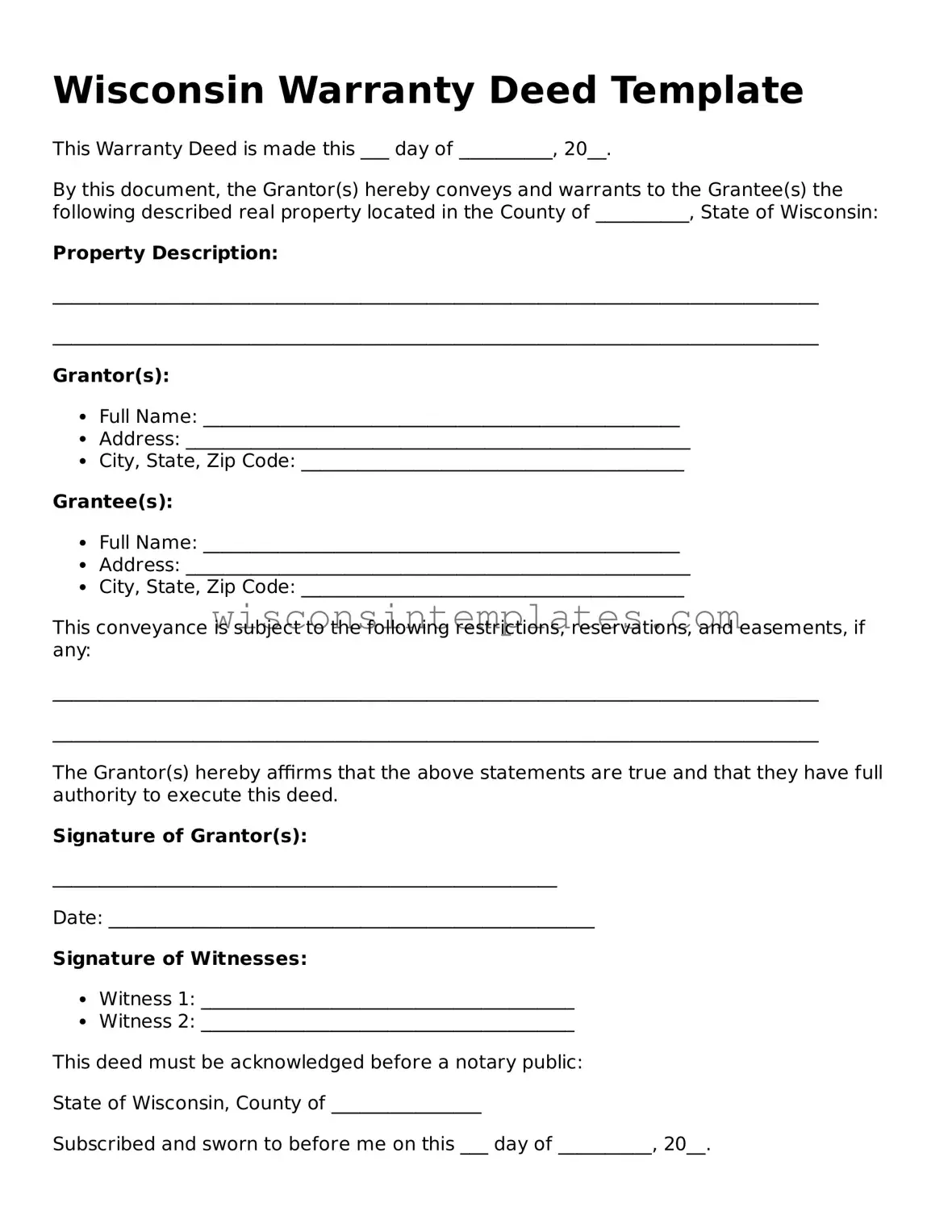The Wisconsin Deed form is a crucial document in real estate transactions, serving as the official means by which property ownership is transferred from one party to another. This form encompasses various key elements that ensure the transaction is legally binding and properly recorded. Among these aspects are the names of the grantor (the person transferring the property) and the grantee (the person receiving the property), which must be clearly stated to avoid any confusion. Additionally, the form typically includes a description of the property being transferred, often requiring specific details to accurately identify the parcel of land. It is important to note that the Wisconsin Deed may also specify any conditions or restrictions related to the property, which can influence how the new owner may use it. Furthermore, the signature of the grantor is necessary for the deed to be valid, and in many cases, a notary public must witness this signature to provide an extra layer of authenticity. Understanding these components is essential for anyone involved in a property transaction in Wisconsin, as it ensures that the transfer of ownership is executed smoothly and in compliance with state laws.
